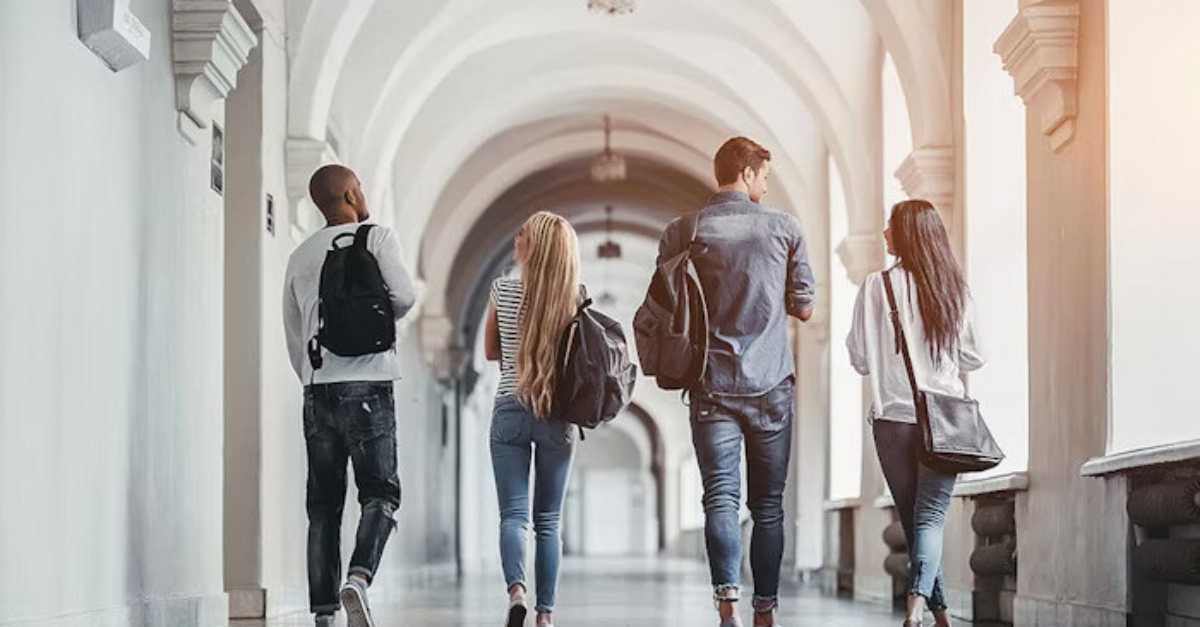As higher education institutions strive to put reopening plans into place, they find themselves challenged to connect people to space in a safe, effective manner. One important tool for safeguarding the health of individuals on campus is implementing social distancing, but what that ultimately looks on a busy campus is still being sorted out.
Ensuring that colleges and universities meet their goals of safer facilities and connected communities – while continuing to deliver on the campus mission – requires innovative solutions that can quickly adapt in an ever-changing environment.
At Accruent, our higher education customers have shown us that technology is playing a major role in their “return to campus” planning. Using information gleaned from hundreds of campuses, large and small, across the nation, we have assembled learnings, best practices and ideas for how to move forward with a successful back-to-campus plan – and how to efficiently use the right technology as we adapt to our new reality.
Social Distancing and the On-Campus Student Experience
Even before Covid-19, it could be difficult to find enough space for all the classes, events and other activities that are held on campus. Now, with the decreased utilization that comes with social distancing, it is promising to be even tougher. That is why it is so important right now to have accurate information on space capacity and to be able to maximize the use of that space.
Take college courses, for example. Institutions need to establish and create social distancing in a diversity of spaces, while maintaining freedom to move in and between them. It starts by assessing room capacity under new guidelines – say, at least six feet apart between students, perhaps seats all facing the same direction – and then modifying seat assignments accordingly.
Room scheduling software allows you to quickly and easily simulate your capacities based on a variable distance between each student, giving a true picture of capacity that you can adjust as circumstances change. For instance, you can globally set capacity settings to 50% initially, and move the percentage up or down as circumstances dictate.

Accruent’s EMS space and resource management software offers features to manage your seat fill percentage on campus. Click to watch the demo.
This software also enables you to experiment with and ultimately land on optimized schedules for spreading out your course offerings and balancing physical capacities. By running different scenarios in your academic reporting, you can see how schedules would look with A days and B days, with courses outside of the traditional 10-2 crunch time, or with classes that run during different blocks of the days – such as some on the hour and some on the half hour, which lessens physical proximity by decreasing the amount of students transitioning simultaneously.
Study rooms, meeting spaces and amenities are all areas that must be considered similarly to the classroom experience. Space management platforms like Accruent’s EMS platform offer centralized booking that smooths the process of reserving study carousels and pool lanes so students are not wandering around looking for open spaces they can drop into.
The same is true for campus events. While many campuses are limiting the number of non-essential gatherings, they can use these platforms to control the flow of outside to adhere to social distancing policies.
Enhanced Remote Learning
For students who are not comfortable returning to the physical campus, institutions must continue to support remote learning. Fortunately, universities can draw upon previous experiences with live stream software such as Zoom and lecture capture technology like Panopto, Kaltura and Echo360, which are critical in this new and often hybrid environment of remote and in-person learning. Tools that tie the whole system together lead to less disruption in the classroom.
Here at Accruent, we have seen integration technology that is increasingly popular in the private sector, especially in the corporate space, also trending in higher ed. No one wants a professor to have to log in to a dozen different pieces of technology just to start the classroom. One-touch buttons for setting up videoconferencing, turning on lecture capture, etc., can have seamless back-end integration with room scheduling software, leading to frictionless interactions without burdening faculty and other resources.
Thoughtful Administration and Staff Space Planning
It is no secret that rising construction costs are prompting universities to constantly look for ways to lower real estate expenses, but that issue has taken on even more urgency today. Thoughtfully restricting bookable spaces to promote distancing can help universities that are already trying to do more with less. Technology that helps people visualize what their space looks like and what effective safe social distancing looks like can help optimize usage, as seen in this example:

An example of a floorplan that can be updated to Accruent’s EMS room and resource scheduling solution for identifying which spaces are available to reserve.
But the limited seating capacity in this scenario begs the question: How will universities adapt to less seating space? The need for fewer seats may be strengthened by the possibility of remote work. Remote work often comes with challenges but can be an effective part of a social distancing strategy, when certain groups work from home certain days of the week.
In addition, educational institutions are exploring office hoteling, where staff trade in permanent spaces for flexible, bookable ones. Data on campus hoteling is scarce, but we predict a culture shift at universities just like the one we are seeing in the corporate world, especially among younger employees.
For example, they might grab a desk on Monday, work from home on Tuesday, and work in a coffee shop on Wednesday. Technology supports this allowing everyday users to reserve spaces quickly and conveniently from a variety of access points, including centrally located kiosks, online request forms or programs like Outlook linked to their personal calendars.
Work and Crew Management
To implement social distancing, one of the best practices that we have seen a variety of institutions recommend is to separate crews both physically and in different time frames. The idea is to split work crews into A and B (or even more) groups that either work on different days or work in different buildings. As well as being a preventive health measure – if someone gets sick on a crew, it will limit exposure to others – should someone become ill it would not ground the entire maintenance team, so you can keep your facilities up and running.
Facility management software includes tools that allow facility teams to easily change schedules, mass update work orders and smoothly handle one-off requests. Accruent’s FAMIS software solution, for example, can help promote social distancing through the creation of non-overlapping work crews, which can then be assigned to work order batches.
Additional Social Distancing Technology
Along with the tools mentioned above, an abundance of technology can be deployed to support social distance policies. Some of these include:
Digital Signage
Room signs that indicate who has registered to use a particular space can enforce booking logic and decrease multiple groups or users attempting to use one space at the same time.
Occupancy Sensors
Sensors can alert to spaces exceeding a safe capacity, and when synced with badges, can even indicate who is in a space at a particular time in case they need to be contacted later.
Contactless Reservations
The days of walking up to book a space on a tablet may not return for a while, so campuses can make those spaces accessible through sensors that read Bluetooth or through swiping a badge using a radio sensor.
Notifications
Simple reminders such as “you have booked this space on this day,” sent by text, email or mobile app, can help cut down on people needing to rebook space because of forgotten reservations.
Reporting
Reporting gives campuses better insight into everything from understanding the number and percentage of rooms occupied in any given time to event cancellations and events over a certain size. Added benefits include the history of a workspace (for better contact tracing) and room occupancy (for best cleaning practices).
Back-to-Campus Planning
When it comes to social distancing on campus, there is no one-size-fits-all approach, just as there are a variety of back-to-campus plans. Based on data that The Chronicle of Higher Education released, we see that some higher education institutions are planning for in-person instruction, some fully remote, some are hybrid and some are planning for range of options – while still others are waiting to decide, everything will depend on the specific circumstances of each unique situation.
Watch This On-Demand Webinar.






